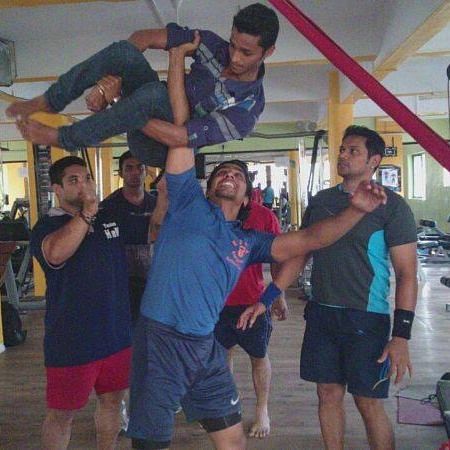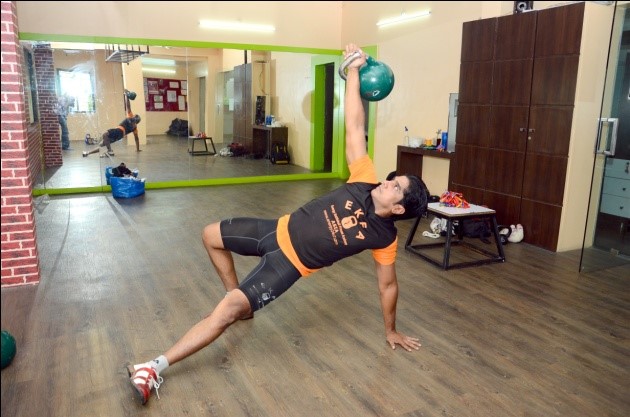Termed as suryanamaskar of Kettlebell training, Turkish get up is most challenging workout for the core, which can be added in regular fitness training program as one of the important lift.
It is a highly functional movement that requires all the muscles of the body working together in order to accomplish the task. One the key core lifting move is not simple enough as you have to lie on floor flat, hold the Kettlebell on top in hand and stand up in one go which needs to be performed in medium paced timings ensuring the balance while doing the task.
TGU (Turkish get up) requires shoulder stability, core strength & leg drive.
Benefits of Turkish Get-ups!
– Increase shoulder stability, balancing the bell while performing task involves the complete shoulder girdle muscles (like trapezius, subclavius, pectoralis minor and levator scapulae, rhomboids).
– Increase in Core strength.
Most important the integrity of all shoulder muscles is important, along with the leg drive to perform the task.
On breathing – while performing the task, exhale on the way to the top at regular intervals. Do not hold your breath while performing movement, all the way till up and back down on the floor.
Stepwise explanation:
- Lie down on the floor with either hand perpendicular to the ground, and ensure the same leg is folded.
- Using the hips, push up yourself and rest on your left elbow (assuming Kbells is in your right hand).
- Push yourself and rest on your left palm, ensuring the Kbell is holding vertically.
- Lift your hips up (like a bridge) and push back left leg in lung position.
- Make yourself straight in a lunge position and stand up.
- In the entire movement, the Kbells is in a static position and it doesn’t move either front or back.
- On the way back, the opposite leg moves back in a lunge position, simultaneously putting your hands down on the floor with the correct balance.
- Push your left leg straight and sit down with your elbows down, followed by shoulder down.
- Lie down and make your both legs straight and slowly you can get the right arm down which can be rolled on floor to end the TGU.
Before TGU:
As the lift is dynamic, ensure your client at the first level can hold the Kbell and can do overhead walk for 1 min at least. Once the stability is better, usually men can start with 12 or 16 kg bell women can start with 6 or 8kg bell and men can progress to 24kg and women can progress to 16kg in a few weeks.
Back flexibility is key in holding the Kbell overhead, if the back is tight the lock-outs would be in-correct, which can hamper the performance.
So first thing first, flexibility, stability, and mobility leads to better and enhanced performance.
Progression:

2-hand TGU is progression to one-hand TGU which does not have any support on the floor and would be done by balancing bells with individual bells in 2 hands and getting up from the floor and standing and coming back to the start position. 2-hand TGU is recommended after a few weeks of training with a single bell.
Similar to a single Kbell overhead hold, the suggestion would be to use a 2-arm Kbell overhead hold from 1 min to 3 min, based on your training intensity.
Practice getup-sit-up for one to two weeks before 2 hand TGU is attempted.
TGU is important lift taught in precise manner in EKFA Kettlebell workshop, if you wish to learn the correct technique, you can’t afford to miss the 2-day workshop at your city.
Be Kettlebell Strong!

